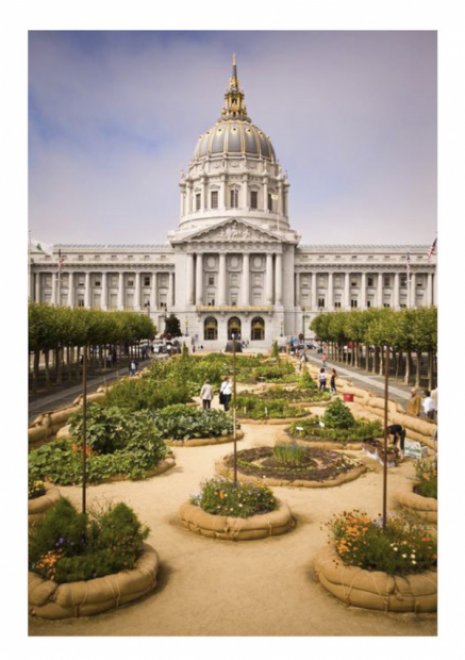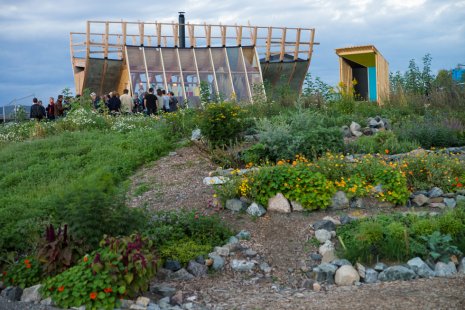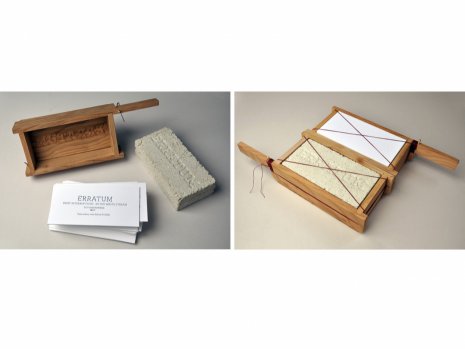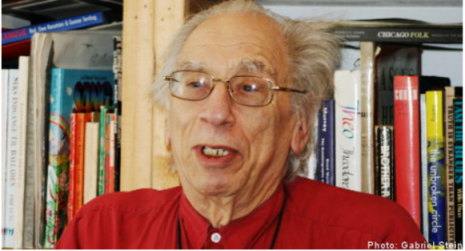Chapter One
This exchange between Amy Franceschini and Renny Pritikin* took place via email in San Francisco during March and while out to sea (Amy) in April 2017.
Renny Pritikin:
My first question has to do with what to call your practice. Part of me just wants to call it contemporary art. When I used to try to rent 500 pounds of ice, or an outside-a-supermarket mechanical horse for kids for a prop for a performance artist, I would just say it was “for a play.”
That seemed to satisfy most vendors. To say you’re a contemporary artist—rather than a performance artist, or a social practice artist, whatever—seems easier. It leans on the reality that to be a contemporary artist is to embrace the world of possibilities from the white cube to the Internet to town hall meetings. What do you say to people who ask you what you do?
Amy Franceschini:
“Practice” is such a funny way to talk about what we do. I once asked a farmer, “What part of your practice do you identify with the most?” The farmer said, “I am not a doctor! What do you mean by ‘practice?’”
Once in a taxi in Portland, the driver asked what I do. I told him about our project in Oslo where we are creating an urban farm on a derelict piece of land and working around ideas of “the commons” and land use. He said, “ah you are kind of an archaeologist, anthropologist, sociologist” and then he asked if I had ever heard of TAZ (Temporary Autonomous Zone) by Hakim Bey. And we had a nice exchange about the commons and non-hierarchical frameworks of social relationships.
He quoted Bey, “ …the best way is to concentrate on the present and on releasing one's own mind from the controlling mechanisms that have been imposed on it.”
Maybe this only happens in Portland, but it was a delightful exchange.
Another time, I was held in questioning at Heathrow because they could not pinpoint what I was doing in England. They asked me the purpose of my visit. I said that I was invited by Loughbourough University to do a temporary art project. They asked me what the project was. I said I will be making a garden. They said, oh, you paint landscapes? I said, No. I will be making a garden with students. They said ok, so you are a gardener. I said, I am making a garden, but it is an art project. I am an artist. Ok, so you paint landscapes.
This went on for some time and then I went into secondary questioning with someone entirely new -- same exact questions and responses but this time, at the end, I agree, yes, I paint landscapes.
I missed my train and had a long delay in reaching Loughborough. I tried to find some humor in this and thought a lot about what I do, what do I do?
Maybe it is ok not to have a defined answer. By not having the exact language or title to describe what I do, a space opens up for encounter, questioning, discussion. Too often we want a quick answer, but I find this often just closes off the conversation.
If I feel that the person will be alienated by my wandering descriptions I have said the following: I am an urban farmer. Or I am an artist - what kind? - sculptor - what material? (This is where it gets tricky.) If we have time, I tell them that I work with material and immaterial matters, i.e. wood and relationships. Or paper and chance. If I am in an art context, I can relate to Institutional Critique and sculptor most readily
On airplanes people often ask what I do. I always take a deep breath. Sometimes I want to say I do landscape paintings and get back to my book.
RP:
Here’s another tack. Robert Duncan once wrote a book of poetry called The Opening of the Field. He was referring to the way poetry changed during the Beat era. When he was a young man I’m sure he was taught that poetry had a meter, had rhyme, and had strict form. By the time of his middle age, everything like that had been discarded. Poetry could be any kind of writing that the poet wanted or needed it to be. (Just like Duchamp did for visual art.) So poetry could be free to use plain English, with no restrictive form or rhyming. The vocabulary was opened up to include slang, cursing, foreign words, etc. All bets were off. Kenneth Koch wrote a book (about teaching kids to write) called Wishes, Lies and Dreams, which implied that the poet was permitted to not tell the truth, or make things up, or pretend to be someone else, or anything else.
It seems like you and your collaborators have a similar impulse. That as artists you saw everyday activity—cooking, carpentering, teaching, farming—as acts partaking in the poetry and power of visual art. And that if considered in that aestheticizing light, everyday life and art can merge. And vice versa, art can be everyday life, integrated in it.
AF:
You say it more gracefully than I ever could. It makes me think of a few things.
Yes, I see the poetry in the everyday, but I also wish to interrupt the routine of
the everyday by using absurdity, ‘road blocks,’ swapping shoes with someone for a week. (see images below)
A few years ago, I was invited to be in an exhibition in Tbilisi, Georgia curated by Tara McDowell. They were not able to raise the funds to transport the artists, so I proposed to swap shoes with someone in Tbilisi and walk in each other’s shoes for one week in our respective locations. We chose to wear mismatched shoes (left foot our own favorite shoe and right foot the other’s.) For one week this dislocation of soles led to a brightened mode of paying attention.
Below are some images from a 2012 Reclaim Market Street. Together with a group of students and young farmers we chose to ‘occupy’ this unused marquee on Market Street. We fashioned our own wooden font and raised statements from people we encountered on the streets (with pool cleaning tools) up to the marquee.
We spoke with passersby and collected their messages via a typewriter and changed the messages once an hour during the run of the day. The final message, The Days are Getting Shorter did not last until the next day.
I once lent you a book called, The Politics of Small Gestures: Chances and Challenges for Contemporary Art, by Mika Hannula. He states very nicely on his reason for writing this book:
It is an effort to see and articulate certain works and actions of contemporary art as vehicles for thought. Not as products, not as spectacles, and not as authentic expressions of something called reality, but as, well, something different, something else. And yes, that something else is the politics of the small gesture. I will argue for a version of contemporary art that is a part of our everyday experience. I want to see art as a partner in crime. A crime of passion, that is: participating in the processes of shaping and making the content of concepts and symbols. A web of processes that aims at generating sustainable conditions for knowledge production. It is a version of involvement in contemporary art that focuses on what it has to say to us about our lives. It is not high up there somewhere, and neither is it down there anywhere. It is near, within sight, so close it tickles our imaginations."
RP:
As a follow up question, it seems like the gap between contemporary art and the general public's disinterest, incomprehension, hostility is something you have thought about a lot, or been forced to think about.
AF:
Hmm. I have never thought of the “public” around me on those specific terms. But another vignette: I was in Stockholm, Sweden at a residency at IASPIS [the Swedish Arts Grants Committee's international program for Visual and Applied Artists] for several weeks. I was researching agrarian rituals, traditions and folklore. A friend and fellow artist, Kobe Matthys, was also in residence and suggested I visit a small shop down the street where a New York man had a great collection of folk music.
When we entered the small corner store two men with very strong New York accents were standing up having a heated conversation. The older of the two said, “Have a seat,” and pointed to a small wooden table. Besides one wall of shelves filled with sheet music, the one room storefront was quite sparse. After some time, the older man, Izzy, the shopkeeper, went by and asked if we wanted a coffee and proceeded into a back room to prepare some.
The younger man joined us at the table and was followed by Izzy, with tea and coffee for us. Just as he sat down, he popped back up out of his seat to show us a picture of his father's bakery in the Bronx and an article about him in the Village Voice. He asked us what we were doing in Stockholm. I told him we were artists in residence down the street at IASPIS. He said, “artists? ”What kind of artists?
(That question again.) I turned to Kobe and said, “ He is a conceptual artist,” excited to see how Kobe would navigate this title. Izzy said, “Concept artist? What is that?”
The younger man interjected, “you know that artist that is at MOMA right now. She sits at a table and people can come and sit with her. Her name is… (he stumbled for a moment) Marina… Abromno… (could not remember her name. - we helped him: Abramović). It’s called The Artist is Present or something like that.” Isn’t that conceptual art?”
“A table? And she sits with people? Well I have had a table here for 33 years and I sit with people. I am a concept artist. I should put up a sign over the door, The Shopkeeper is Present!” he said.
For me, this moment, this man, and his “practice”- the storefront - is the quintessential work of art. There is something about the persistence of presence that I find is the work of art. The framework of his very simple storefront and minimal, yet focused stock provides a framework for improvisation, chance and encounter. People come to him. He does not have to travel the world over to engage with the work he loves. If you want to look him up:
I feel like a...
- choreographer
- bureaucrat
- inspirational speaker
- farmer
- organizer
- illustrator
- mapmaker
- archivist
- flâneur
- journalist





